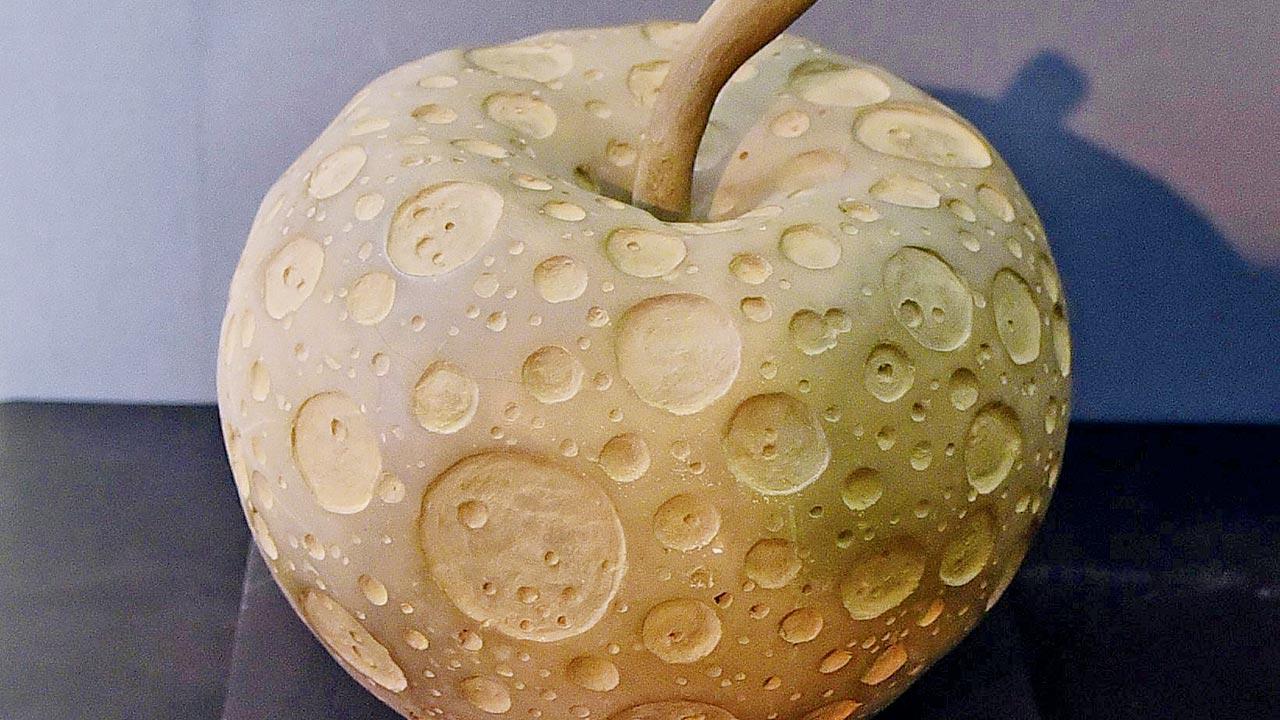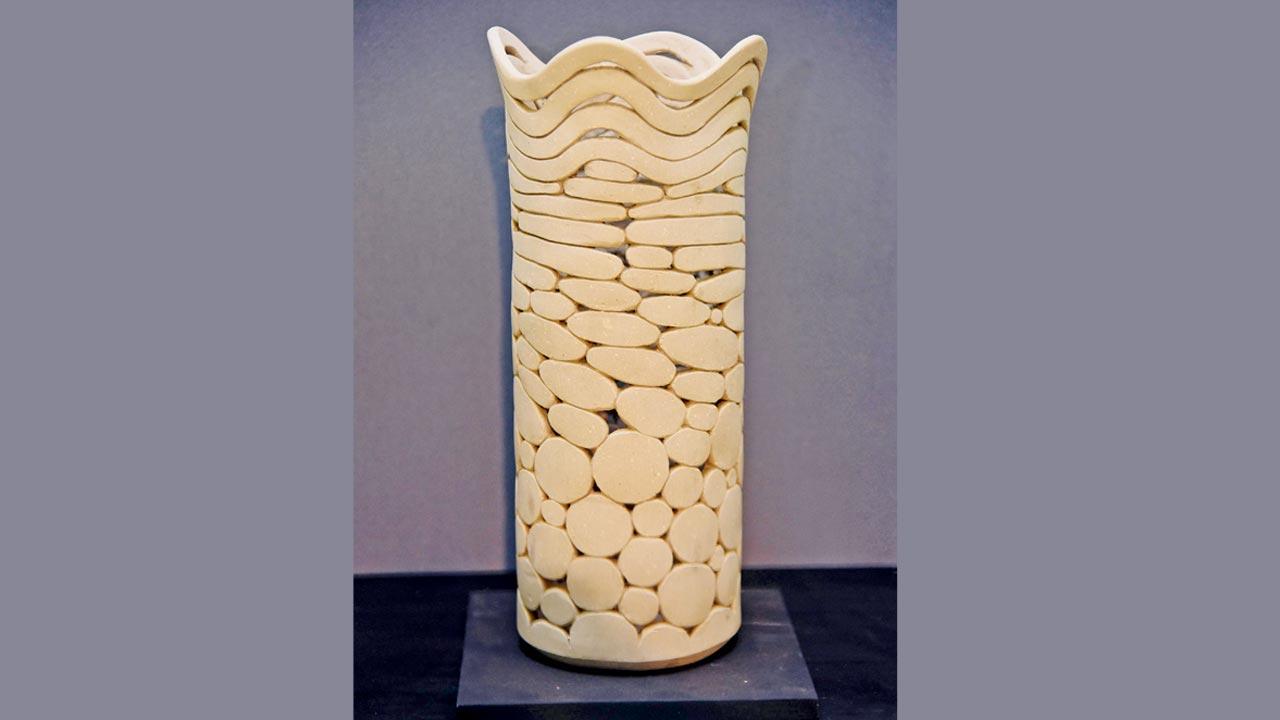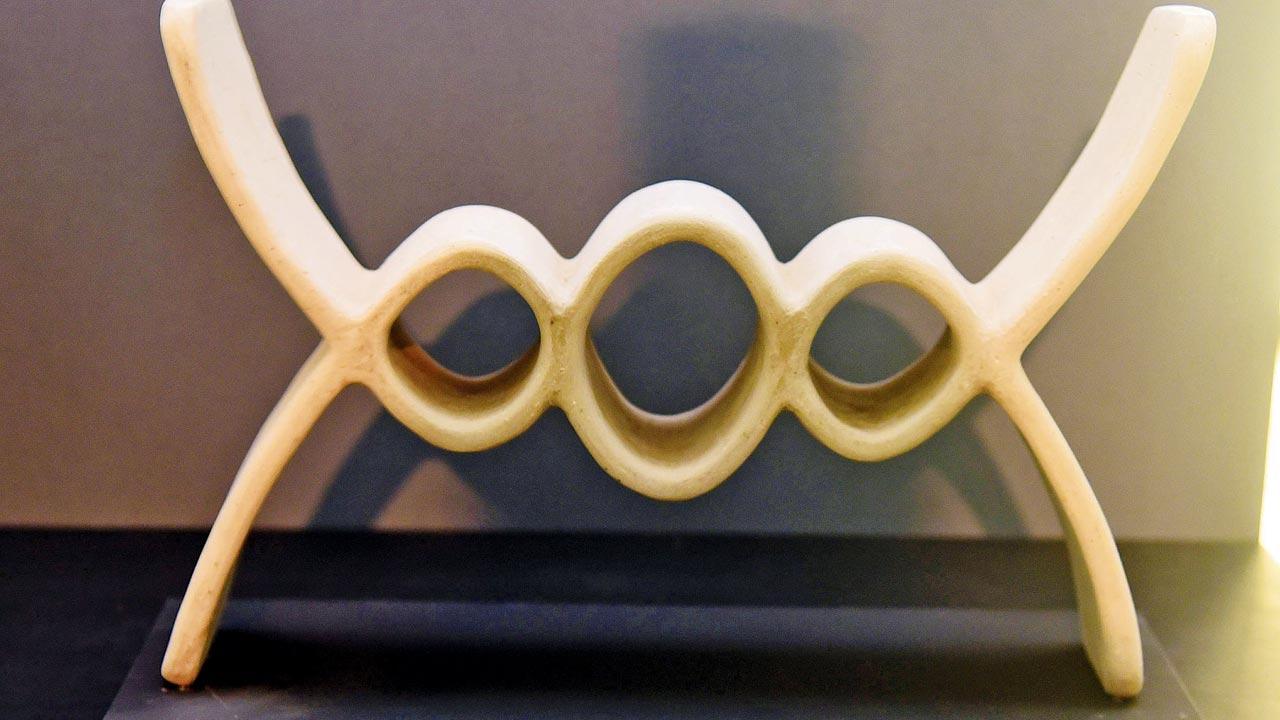Nothing can prepare you for a conversation with a physicist, certainly not one about abstract art. TIFR physicist Sukant Saran straddles both worlds with mastery

Sukant Saran depicts the notion that any observer in the universe, irrespective of position, would find space expanding in all directions. Pics/Shadab Khan
Sukant Saran would like you to know, right off the bat, that his pieces of art are not diagrams. The clay sculptures do not represent scientific concepts; it is not how he envisions them. They are conceptual melding of art and the laws of physics.
ADVERTISEMENT
For instance, the story about Isaac Newton discovering gravity after an apple falls on his head, is just that, a story. “Newton’s great contribution to science, however,” says the physicist “was the observation that the force that made the apple fall from a tree was also responsible for keeping the moon in its orbit around the Earth. He connected the celestial and the terrestrial in his Theory of Gravitation.” Saran’s massive clay apple is pock-marked with lunar craters to represent this connection that Newton made. That there are vacuums in the universe is another myth he busted.
 With craters on the fruit’s surface, Newton’s Apple posits that the moon and the apple have the same status in Newton’s theory of gravitation
With craters on the fruit’s surface, Newton’s Apple posits that the moon and the apple have the same status in Newton’s theory of gravitation
The 59-year-old works at TIFR (Tata Institute of Fundamental Research) which is parked at the end of Homi Bhabha Road in Colaba, right next to the entrance of Old Navy Nagar. Too few would go looking for art there, never mind the security clearance. And that is unfair. “My colleagues have all seen [the exhibition Sculpting Science: An experiment in art] and supported me, but yes, I don’t know how others will find their way here. As it is, there is a bit of mystery about what we do here at TIFR.”
Saran is born of a journalist father, and raised in Chandigarh amidst an environment rich with poets, artists and artistes, authors and other cultural elements of the day. “I have been drawing and painting since I was a child. Initially, I was engaged in creating abstract pen art and then moved to digital art in 2000,” says the scientist. Along the way, he realised that he was thinking in three dimensions and then translating it into two-dimensional art.
 In quantum mechanics, particles are waves, and waves are particles. This sculpture shows particles coalescing to make waves, and waves are becoming localised particles
In quantum mechanics, particles are waves, and waves are particles. This sculpture shows particles coalescing to make waves, and waves are becoming localised particles
Sculpting seemed a more appropriate form. At first, he would play around with different types of clay, took some basic pottery classes and it became his chosen medium. A few experiments in, he realised that his hand was being informed by science and the sculptures grew into concepts about subatomic particles (particles as waves along the axis of time), physical processes such as evaporation, ductility and malleability (at the sub-atomic particle level), history and symbolism (the apple comes here, as well as an “accurate depiction of a tree”).
“Traditionally, the tree is depicted only by what we see above ground,” he says, “but the tree as an organism is spread as much below ground as the branches are above it. I have modified the usual traditional symbol to show that this should be the actual drawing of a tree as informed by science.” The secondary intent is to emphasise that unseen processes are as important as those seen.
 Embryo day 18 shows the division and differentiation of cells as a foetus develops in the womb. The repeated folding, unfolding, stretching and contraction of two interacting layers forms all elements of a developed human body
Embryo day 18 shows the division and differentiation of cells as a foetus develops in the womb. The repeated folding, unfolding, stretching and contraction of two interacting layers forms all elements of a developed human body
More sculptures are grouped into Duality: Order/ Disorder, Wave/ Particle, Matter/Antimatter and Interaction; mathematical forms shown through abstract representations of Surfacing, Saddle and Idealisation. For instance, the Earth does not have a smooth surface—there are mountains and trenches, oceans, overlapping or colliding tectonic plates. But for the sake of calculation, we assume it to be a smooth globe. With this, Saran tries to make the point that science is an abstract representation of nature, just like a poem or painting.
“Dualities such as mind-body or good-bad are enmeshed in our daily routine in a way that our lives are governed by them. Wherever you look, whatever you do, some duality is part of our life. Science also has dualities and I have tried to depict some of them. Sometimes they appear as mathematical abstractions, and sometimes as manifestations in the physical environment,” he explains. One sculpture shows “order merging seamlessly into disorder”. “Though this is a scientific concept, it can be applied to any situation”.
“You have heard of the Möbius loop?” he asks, walking to the next sculpture. We nod, dishonestly (It’s the surface formed by attaching the ends of a strip of paper together with a half-twist, we find out later). “I have just used the concept of half turn. If there is a protrusion [on one side], with half turn it becomes a depression. There is no actual theory that uses Möbius strip as a mechanism for pair production.”
One of the last two groups is Biological forms that show science-art interaction. Multicellular life-causing mitochondria; the segmentation seen in an earthworm or the bark of a date palm being mimicked by an embryo as it grows; and representations of 18-day and 28-day embryos. The last group is Space and Time, seen in physics as one entity. Twenty four of the 80 pieces he has created are on display until June 10.
No amount of watching Dr Who or Big Bang Theory prepares you for a conversation with a physicist; certainly not one about abstract art. This writer asked him to explain the pieces as if he was addressing a six-year-old, and a round about the room stretches the imagination. Especially if one sat immobile through physics period, eye glazed over. Try understanding this: “As per quantum mechanics, waves are particles and particles are waves.”
The abstract depiction of space-time or wave-particle duality along the axis of time may need a more specific kind of mind, there is no denying the beauty of each sculpture. Strips of clay meld into each other to depict an expanding universe, with the galaxies going further and further away from each other. It’s a complex and chaotic piece, one that draws you in. The biological forms and physical processes (evaporation, ductility, malleability and expansion) are much easier to wrap one’s head around.
It was his peculiar position in space and time that guided Saran’s education, as well as societal conditioning. “I was good at studies and thus considered to be intelligent, and routed to science,” he says, “If you see this in a wider perspective, it is a very stupid way of thinking. Both disciplines are harmed by this; there is no interplay. It cultivates a very rigid form of thinking.”
 Subscribe today by clicking the link and stay updated with the latest news!" Click here!
Subscribe today by clicking the link and stay updated with the latest news!" Click here!







